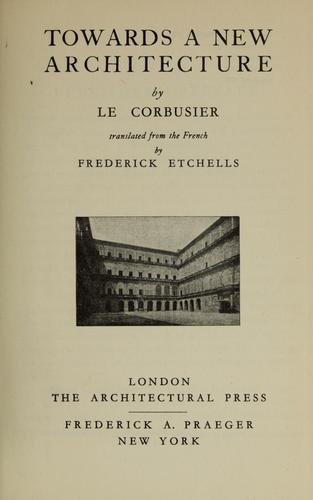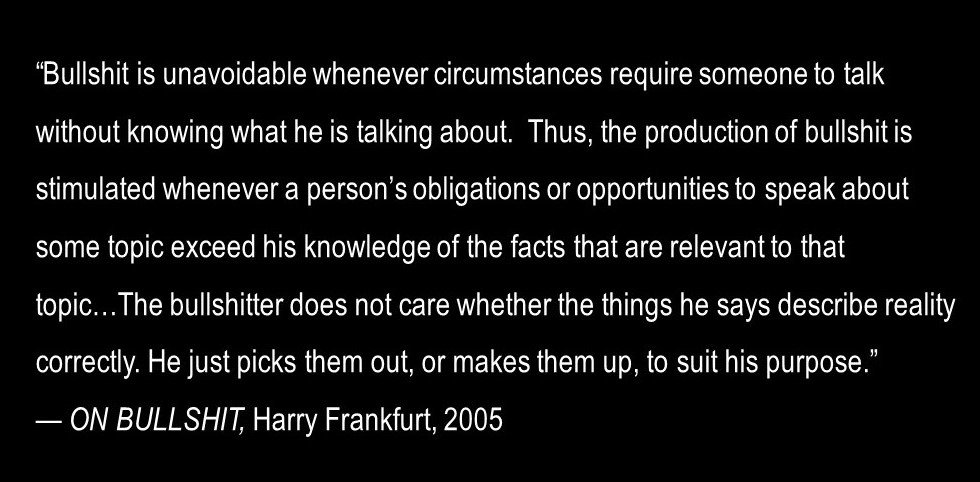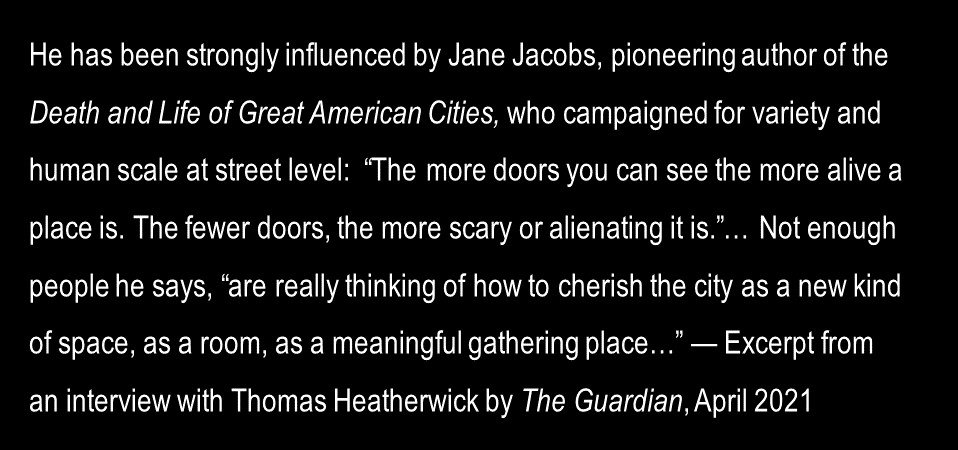KNOWLEDGE EMBEDDED in 5,000 years of human experience applied to contemporary circumstances with a little imagination is all that we need to know to respond well to the needs of the 21st century city, no bullshit required.
To justify and promote its practices the modern movement in architecture generated some of the most incoherent propaganda ever written, and then later engendered some of the most coherent criticisms of both its propaganda and practices. For about thirty years from, say, 1960 to1990 there first emerged the intuition that something about the modern movement wasn’t adding up followed by analyses and evaluations of various kind that called out the questionable veracity and validity of the movement’s philosophical origins, its contradictions and failures in practice, and finally the discrediting of many, though not all, of its practices.
A TREATISE ON ARCHITECTURE is not so much a how-to book as it is a tool with which to organize the philosophical and practical foundations of the practice of architecture. It has a lineage extending back at least 2,000 years and in the heterogeneous, confused climate that is the United States of the 21st century would not be possible today. (Tens Books on Architecture, Vitrivius, Rome, 30-20 B.C, above; De Re Aedifactoria, Leon Battista Alberti, Florence, 1452)
TREATISES EVOLVED to express a point of view, then increasingly devolved into ideological arguments and then with the modern movement morphed into almost purely propagandistic manifestos. (Antoine Laugier, above; Viollet-Le-Duc, below)
INTENDED TO PROMOTE this architect’s vision for how we ought to think about buildings in the context of newly available modern technologies and potentially new ways of living this extended essay argued for the wholesale overhaul of 5,000 years of building traditions no matter the consequence (Vers Une Architecture, Charles Jeanneret, 1923)
Steve and I attended graduate school at the height of all that (late 70s, early 80s) when writers such as Colin Rowe and Alan Colquhoun, publications such as Oppositions and Perspecta, and architects such as Robert Venturi (Complexity and Contradiction) and Michael Dennis (Court and Garden)—most of them associated with schools of architecture—offered erudite, complex, and incisive commentary that despite their undeniable eloquence and convincing appeals to common sense never insisted on agreement, only an appreciation of the arguments made and fair consideration of them. It was “academic criticism” but only to the extent that it aimed to be useful in informing real world practice.
HONEST ASSESSMENTS of the modern movement probably began as early as the 1940s and possibly with Colin Rowe’s seminal essay Mathematics of the Ideal Villa in which he demonstrated the persistence and plasticity of traditional numerically guided compositional strategies linking Charles Jeanneret’s modern buildings to classical buildings such as Palladio’s villas in northern Italy.
FURTHER CRITQUE emerged throughout the mid-20th century in which authors suggested level-headed approaches to advancing modern architecture without having to discard all of the 5,000 years of practice that preceded it. (Alan Colquhoun, above; Michael Dennis, below)
ARCHITECTS WRITING in the latter half of the 20th century adopted the posture of the modernist manifesto to argue for overturning, reconsidering or at least moderating some of the many heavy-handed and authoritarian demands of the modern movement. (Robert Venturi, above; Aldo Rossi, below)
None of this was criticism in that way we think of movie or theater criticism—meaning thumbs up or thumbs down opinions about specific works—but rather an attempt to place theory and practice in historical, cultural, social, and economic context so that we may decide for ourselves. Persuasion was still the goal, but to the extent possible in an admittedly value driven conversation and despite however much the writing was always subject to the subjectivity of the writer, so was objectivity. Crucially, it was never only about historical, cultural, social, or economic context and always about the architecture and the architect’s practices in relationship with it. Those writing at that time viscerally or at least vicariously knew what it was like to be an architect. They knew that architects still always had (and have) agency no matter the context or era.
NO THEORETICIAN AND ONLY AN ARCHITECT such as Robin Evans could have ever hoped to offer such insights as he did through careful and considered reflection on the practice, its possibilities and limitations, its grounding in the real world of geometry, material, and construction as well as the dimensions, senses and mobility of the human body.
NO HISTORIAN AND ONLY AN ARCHITECT such as Michael Dennis could ever hope to offer such a comprehensive and actionable treatment on the first principles of humane town planning and urban design that we inherited from the thousands of years of experience in the west.
Later, though, we got quasi-poetic sociologically minded writers like Mike Davis (City of Quartz) and D.J. Waldie (Holy Land: a Suburban Memoir) who seemed to know or care little of architecture or architects and who wrote as if all that mattered in understanding our built environment was historical, cultural, social and economic context—the implication being that it, like Hegel’s ghosts, determined the architecture of societies and their cities. For an architect there was not much to learn beyond what any citizen generally interested in understanding the sociology of a place and time might.
ALGORITHMICALLY AMPLIFIED BULLSHIT is what’s unique about our time, bullshit having probably been with us since the beginning of time.
Then toward the end of the questioning-of-modern-architecture era counter-reformation critics emerged who wrote mostly for newspapers and magazines about just-opened buildings as movie critics do about just-opened films resplendent with up-to-the-minute, off-the-cuff, trending, topical and entirely subjective commentary. Critics at turn of the century such as Herbert Muschamp at the New York Times and Nicolai Ouroussoff at the Los Angeles Times published articles that offered little more than gossip and promotional PR copy for their favorite architects (and themselves). For an architect there was not much to learn except which architects those critics liked.
PABLUM is the inevitable outcome of nepotism in the world of contemporary academia, a world in which the quantity not quality of output matters, no matter how dumb.
ATTENTION FOR ATTENTION’S SAKE is one value, among others, most cherished by bullshitters. (Interview of Jeffrey Kipnis with Architecture Exchange, 2018)
Finally, today, we get nothing but gossip. We get descriptions of how buildings were built, the political twists and turns to get them built, who paid for them, what people are saying about them along with personality profiles of the architects who designed them.
PARAMETRIC NONSENSE would have us believe that dimensions don’t matter, and straight lines are curves, when calculus tells us the opposite: curves are an accumulation of straight lines and dimensions are fundamental to understanding them. Computation itself is constituted of discrete bits. (Ark of the World Visitors Center, San Juan, Costa Rica, Greg Lynn, Form, 2003, above)
GASLIGHTING is the modus operandi of the consummate bullshitter. (EDEN Apartment Building, Singapore, 2019 Heatherwick Studio, above)
Meanwhile, from the schools of architecture we get intellectually opaque dissertations ostensibly about architecture from those who, because they are so far removed from practice, so driven by the output demands of the institutional-educational complex, and so steeped in cloistered terminology (usually borrowed from other disciplines such as literary criticism, philosophy of aesthetics and psycholinguistics) produce writings so steeped in obfuscation that they offer next to nothing from which a practicing architect could learn anything.
CYNICISM AND BOREDOM are two of the professional hazards of newspaper critics who because of the audience they serve can only ever live in a world of second-hand knowledge, trends, personalities, and gossip. (Herbert Muschamp, left; Nicolai Ouroussoff, right)
We are mired in disingenuous discourse—what the Princeton University philosopher Harry G. Frankfurt calls “bullshit.” Instead of analytical, methodical discussions of facts and principles, or any kind of theoretical effort aimed at creating testable, conceptual frameworks with which to inform our practice (and vice-versa), we get pretend academics such as Sylvia Lavin at Princeton University and Jeffrey Kipnis at the Ohio State University who are neither interested in nor capable of any of that and just want to sound smart. And pretend architects such as Greg Lynn (FORM) and Thomas Heatherwick (Heatherwick Studios), who with little interest in the true practice of architecture or uncovering its truths in service to improving it in the 21st century just want their work to seem smart.
TALKITECTURE A typical 21st century American end-of-semester architecture school design studio student presentation and faculty jury.
DEVELOPER TALK A typical City of Los Angeles Planning Commission meeting (Los Angeles City Hall, 2022, above)
Architecture like any art should stand on its own, no talking or writing necessary. But there still is, in moderation, the room and need for both. For those of us who want to order our thoughts for ourselves and our fellow practitioners, or for those who are just learning, or because in practice we’re always having to explain ourselves and our work while it's in progress we do have to talk and write at least some. But in the 21st century because of the confusions wrought by the propaganda and practices of the modern movement, the reluctance of the counter-reformationists to accept the modernism’s failures and because so many of us feel threatened or are confused by sound reasoning in response to those failures, we obsfucate. As a result, it has been those who write about architecture and architects themselves who have contributed most to the dumbing down of the public discourse on architecture.
A BUILDING IS NO MORE THAN AN INCREMENT in the larger project of building a neighborhood even when there is yet no neighborhood. (Johnson Favaro proposed residential development on Blackwelder Street in Culver City, CA)
CITY PLANNING is not the same as land use zoning—it goes beyond programming, it requires drawings and models, or, in other words an architect’s capabilities. (Johnson Favaro proposed residential development on Blackwelder Street in Culver City, CA within an imagined future neighborhood)
A FUTURE NEIGHBORHOOD envisioned for the Blackwelder-Smiley area of Culver City, CA (Johnson Favaro study, 2022)
































